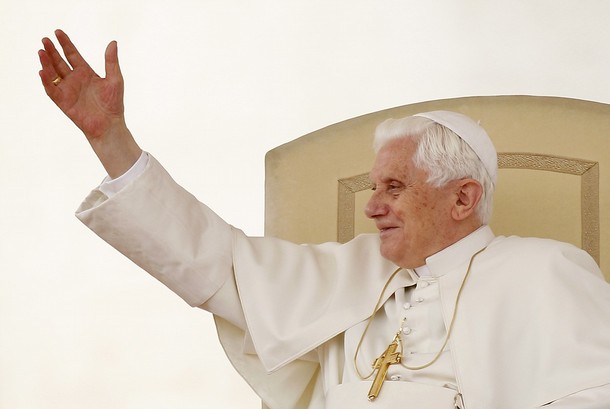By E.d. Kain
The League of Ordinary Gentlemen
April 1, 2010
http://www.ordinary-gentlemen.com/2010/04/andrew-sullivan-spins-and-spins/
 |
In yet another misleading and emotionally driven post, Andrew Sullivan attempts to spin the decision to suspend the canonical trial of Father Lawrence Murphy into a cover-up by then Cardinal Ratzinger. This despite the fact the trial was suspended only when it was learned that the priest was nearing death and that a trial would be cut short. Indeed, Murphy died shortly thereafter and will face, I am quite sure, his judgment elsewhere.
Notably, Sullivan uses an even more sinister looking picture of Pope Benedict in his post today, as if attempting to prove my point from yesterday – regarding people’s subconscious dislike of the pope for purely aesthetical reasons – even further. (Here are two more pictures Sullivan has used to cast the Pope in as sinister a light as possible.)
The rest of Sullivan’s post makes little sense. The Murphy case at this point was not a secret, nor was it in any way confined to the Church – as the New York Times has admitted. Police and other civil authorities had failed to act and the Church had begun its own proceedings, but then halted them when it became clear that Murphy was close to death. This was a poor decision, but it hardly amounts to a conspiracy.
After a number of meetings and correspondence between the Vatican and Archbishop Weakland, Weakland claims he sent Father Brundage, who was in charge of the trial, a letter on August 19th, 1998 telling him to halt the trial. On August 21st, 1998 Father Murphy died.
Whether the decision to halt the trial was Ratzinger’s or the decision of those serving under him is not clear (as it is unclear whether it was Ratzinger or his subordinates who approved the initial trial). Notes do indicate that the decision was made for a number of reasons, including the ‘increased scandal’ of a major trial, but the evidence aside from that one note points to the decision being made primarily because there was very little time left to actually carry out the trial – as made even more evident by the death of Father Murphy two days after the order to halt proceedings occurred. Indeed, as is made clear in the New York Times coverage of these events, Ratzinger’s office made the decision in 1997 to proceed with the trial and only later changed course when it was obvious that Murphy was approaching death.
Another interesting thing – if you read this ‘timeline’ of events surrounding Father Murphy you will notice that they are told quite in reverse. First you are given his last days and the events surrounding the decision not try him. Then, inexplicably you read:
Father Murphy not only was never tried or disciplined by the church’s own justice system, but also got a pass from the police and prosecutors who ignored reports from his victims, according to the documents and interviews with victims. Three successive archbishops in Wisconsin were told that Father Murphy was sexually abusing children, the documents show, but never reported it to criminal or civil authorities.
Instead of being disciplined, Father Murphy was quietly moved by Archbishop William E. Cousins of Milwaukee to the Diocese of Superior in northern Wisconsin in 1974, where he spent his last 24 years working freely with children in parishes, schools and, as one lawsuit charges, a juvenile detention center. He died in 1998, still a priest.
This is quite an odd way to structure a narrative. It’s almost as though the NY Times is implying that Benedict himself was responsible for the 24 years of cover-ups rather than the three Archbishops who kept Murhpy’s crimes a secret for so long.
After reading all of this, I am left to surmise that had Murphy not been on his death bed, the trial would have gone on accordingly. Had civil authorities not dropped the ball, he would have likely died in prison. A great many people are responsible for this horrible cover-up, and are directly complicit in the crimes of Father Murphy, but I fail to see how Pope Benedict is one of them.
Once again I am forced to conclude that the New York Times and Andrew Sullivan (et alia) are using this story as a political weapon against a Pope who they view as a cultural enemy. Sadly, this takes the focus off of the real tragedy and the past crimes and cover-ups in the Church which Benedict has worked hard to reverse.
Obviously the media needs to report on these stories, and the Church is the major guilty party in all of this – see James Martin for some compelling reasons why the secular media has indeed played a heroic role in the past – but scapegoating the pope is not the same thing as justice. Let’s support the media in its mission to unearth these scandals, and call them on it when they rush to judgment before all the facts are in.
Any original material on these pages is copyright © BishopAccountability.org 2004. Reproduce freely with attribution.